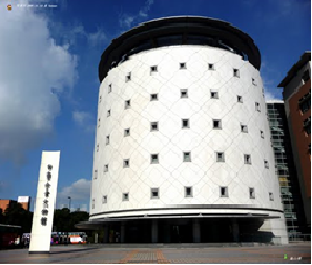About Us
About Us
Vision & Goals:
Electro-Optical Engineering has emerged as one of the leading disciplines in the modern industry in Taiwan. After the successful implementation of the semiconductor industry in the eighties and nineties, the local government decided to include the electro-optical engineering sector in the second trillion-dollar (TWD) industry. This sector includes flat panel displays, light emitting diodes, optical data storage systems, optical communications, solar cells, etc. Therefore, our goals are to supply well-trained engineers to the industry, to research key technologies in electro-optical engineering, and to develop competent faculty for high quality education. In addition to the training of professional courses, we also pay attention to the education of students' personal development and independent research capability training.
The curriculum and research disciplines are currently planned as followings:
(A) Optoelectronic Semiconductors
(B) Optoelectronic system design and displays
(C) Biophotonics
The demands for novel optoelectronic research and development have created both challenges and opportunities for us in the 21st century. We are strongly committed to high quality education, and will continue to encourage cooperative research with the growing optoelectronics industry.
Introduction
Graduate Institute of Electro-Optical Engineering (EOE), Chang-GungUniversity
1. Personnel
- Faculty number: 7
l Staff number: 1 secretary
l Graduate student number (Master): 28
l Ph.D. degree program: 2 (via Dept of Electronic Engineering)
2. Credit required
A minimum of 36 credit hours are required for Master’s Degree.
3. Core courses
- Geometric Optics
- Optical Interferometry and Diffraction
- Crystal Optics
- Electro-Optical Laboratory
4. Research-related courses
- Semiconductor Experiments
- Laser Physics
- Fourier Optics
- Optoelectronic Semiconductor Devices
- Solid State Physics
- Quantum Mechanics
- Principle and Applications of Display
- Technologies of the Liquid Crystal Display
- Optical Storage Technology
- Optical Metrology
- Solid-state light Source
- Introduction to Solar Cells
- Material Analysis
- Photonic Crystal Technology
- Nanophotonics
- Nanomanufacturing
- Biophotonics
- Polarization Optics and Applications
- Biomedical Optics
- Biomedical Sensing
- Fiber Optical Communication
- Green Transistor and Integrated Circuit Design
- Principle and Applications of Optical Coherent Tomography
5. Reputation of Graduate Institute of Electro-Optical Engineering
- The Top-1 private University and one of 11 top-ranking Universities in TAIWAN (Award by the "Top University" Project of MOE, TAIWAN; launched in 2006-2011 (phase 1) and 2012-2017 (phase 2).
- Rank in 390 in the "2012 Academic Ranking of World Universities" among global University (rank in 6 in TAIWAN)
- Rank in 495 in the "2012 NTU Ranking" among global University (rank in 6 in TAIWAN)
- The semiconductor facility centers around cleanrooms equipped with a full suite of tools supporting 2-inch to 4-inch optoelectronic device fabrication and characterization. Although conceived as a photonics-based research facility, Graduate Institute of Electro-Optical Engineering (EOE) supports researchers in applications ranging from medicine and biology to microelectronics and industry.
- EOE is committed to educate a new generation of researchers and engineers who will reflect the innovation and creativity in modern optoelectronics. We offer disciplinary study in optoelectronic semiconductors, optical designs, and bio-photonics.
- EOE has a long history of working with industry on projects. As a graduate research student of EOE, you are part of a diverse and vibrant research community. These students are not only a robust source of talent in your organization and the globe as a whole, but have the opportunity to fill leadership roles in their home countries as well.

6. Expenses:
|
Program |
Master |
|
Tuition (USD) |
$1,100/ semester |
|
Miscellaneous Expenses (USD) |
~$400 |
|
Insurance (USD) |
~ $10/ semester |
|
Accommodation (USD) |
~$250/ semester |
|
Textbooks (USD) |
~$80/ semester |
|
Living expenses (USD) |
~$300/ semester |

7. Research highlights

8. Vision & Goals:
Electro-Optical Engineering has emerged as one of the leading disciplines in the modern industry in Taiwan. After the successful implementation of the semiconductor industry in the eighties and nineties, the local government decided to include the electro-optical engineering sector in the second trillion-dollar (TWD) industry. This sector includes flat panel displays, light emitting diodes, optical data storage systems, optical communications, solar cells, etc. Therefore, our goals are to supply well-trained engineers to the industry, to research key technologies in electro-optical engineering, and to develop competent faculty for high quality education. In addition to the training of professional courses, we also pay attention to the education of students' personal development and independent research capability training.
The curriculum and research disciplines are currently planned as followings:
(A) Optoelectronic Semiconductors
(B) Optoelectronic system design and displays
(C) Biophotonics
The demands for novel optoelectronic research and development have created both challenges and opportunities for us in the 21st century. We are strongly committed to high quality education, and will continue to encourage cooperative research with the growing optoelectronics industry.
9. 2018: 7 Teachers and 18 Students
